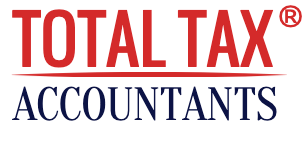For new employers and start up businesses
Do you have clients taking on their first member of staff? They’ll need to find out if they need to put them into a workplace pension – and make contributions on their behalf. It’s the law.
Every employer has automatic enrolment duties, even if they only have one member of staff. They’ll need to put certain staff into a workplace pension, and make regular contributions to the scheme on their behalf. From 6 April 2018, minimum amounts employers have to pay into workplace pensions increased to 2% of qualifying earnings, while staff will now contribute 3% – making a combined total minimum contribution of 5%. Make sure your clients are paying enough – it’s the law. The best employers in your city, Accountants High Wycombe.
The Pensions Regulator has online information and guidance that will help employers including a short video, and a useful template letter to help clients explain the increases to their staff.
For employers who have already enrolled staff
The minimum amount employers must pay into workplace pensions increased from 6 April 2018. Make sure your clients know what to do.
On 6 April 2018, by law, the minimum amount employers have to pay into workplace pensions increased up to 2% of qualifying earnings, while staff will now need to contribute 3% – making a combined total minimum contribution of 5%.
| Date effective | Employer minimum contribution | Staff contribution | Total minimum contribution |
| Until 5 April 2018 | 1% | 1% | 2% |
| From 6 April 2018 | 2% | 3% | 5% |
| From 6 April 2019 | 3% | 5% | 8% |
Employers should contact their pension provider and payroll team to check arrangements are in place to pay these new amounts. It’s also recommended that they write to staff to let them know about the increase in contributions – The Pensions Regulator has letter templates available to help them do this.
The earnings thresholds for automatic enrolment increased on 6 April 2018 – make sure you know how these changes impact your clients’ pension contributions.
Automatic enrolment duties are ongoing. As well as keeping records, managing requests to leave or join a scheme, it’s also important to monitor the ages and earnings of staff (including new starters) on an ongoing basis to see if any of them need to be put into a pension scheme. While your clients’ payroll software is likely to make these age/earnings calculations automatically, it’s important that they know what’s required to ensure they meet their legal duties.
Every year, the Department for Work and Pensions (DWP) review the automatic enrolment earnings thresholds – the thresholds for 2018/19 have changed and the new figures can be found here.


